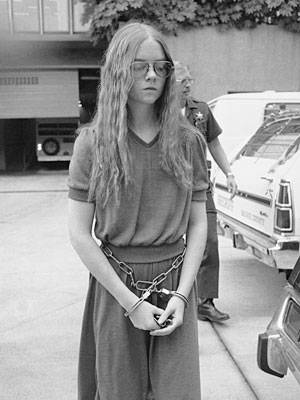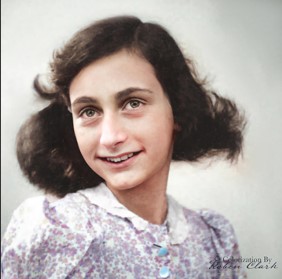“Ugh, it’s Monday” are the words that usually follow the arrival of the most dreaded day of the week. The sighs floating in the air are palpable and nothing seems possible. Mondays always carry with them a negative connotation and contain components such as depression, fatigue, and anguish. But to a San Diego elementary school, and to a troubled sixteen year old, Monday, January 29, 1979 held an even more distressing meaning.

Students at Grover Cleveland Elementary School, located in San Diego, California, began what they believed would be a normal Monday morning like any other, with bells ringing and students racing to their classes. Little did they know, however, that across the street, sixteen-year-old Brenda Ann Spencer was aiming her .22 caliber semiautomatic rifle right at society’s ultimate refuge, the elementary school, and its surroundings. After the first bell rang, Brenda broke the panels on the front door of her home, which was located right across the street from the elementary school. And she began to fire. The school’s principal, Burton Wragg, while rushing outside, was hit on the shoulder and chest with Spencer’s bullets and eventually died. Michael Suchar, the school’s custodian, ran outside with a blanket in order to cover Wragg and keep him from going into shock, but he quickly became the second victim of Spencer’s shooting and lost his life. In between all the chaos, 28 year old Robert Robb, a recent graduate of the police academy, while examining Wragg’s and Suchar’s bodies, was shot under his right shoulder blade.1 He would go on to survive though, along with the eight other children who were wounded in the incident. At least three of those children had abdominal wounds. A nine-year-old student, Cam Miller, was struck in the back with a bullet that exited through his chest without hitting any internal organs. Another, Christy Buell, was shot through her abdomen and in the buttocks, and had to undergo surgery in order to repair her intestine.2
When Gus Stevens, a reporter for the San Diego Evening Tribune, began calling around the area to gain more information about the shooting, he coincidentally placed a call to Spencer’s home where she gave him exactly what he wanted. She described the shooter, a sixteen year old, and the shooter’s address. When Stevens realized that she gave him her own address, he recognized what was going on and requested an interview while another staff member informed the police of the situation. The police, now aware of where the shots were coming from, were able evacuate the children and obstruct Spencer’s line of sight while trying to negotiate with her. After several hours, Brenda Spencer surrendered her weapon and several rounds of ammunition, and was subsequently arrested. While on the phone with Stevens, Spencer had stated that she was just shooting for the “fun of it.” She went on to say that she just didn’t like Mondays and did this “because it’s a way to cheer up the day.”3

Contrary to her initial claim, she later went on to state in her 2001 parole hearing that she had been “sexually abused by [her] father” and was “waiting for the cops to show up so they could shoot [her].”4 This new information has fueled many more theories today about Brenda Spencer’s true motives in committing such a crime. During her pretrial psychological testing, an injury to Spencer’s temporal lobe came to light. Spencer has also stated in a letter from prison that she experiences “grand mal seizures” that she has to counteract with medications.5 Such a brain injury would definitely be a precursor to epilepsy, which is two to four times more common among violent offenders than the public.6 The lack of treatment she received for this disease, to some, proves the neglect that she experienced from her family and in her childhood. Psychologist Jonathan Fast introduces the idea that her brain injury, abuse, and the effects of it pushed her to her final actions. He believes that the shame, ridicule, inferiority, and powerlessness that she felt encouraged her to go as far as she did. In another letter she wrote in prison, she stated that her “father had done everything a person could do to another person. The beatings, the touching, the emotional abuse.” She went on to state that no one, not teachers or counselors, gave her assistance through this, so she simply thought that this was how the world and how life worked. When her father gifted her the .22 caliber rifle, she thought that he was finally telling her to do it: to take her life successfully, unlike her past suicide attempts, and leave the world forever.7
Whether these theories are true or not, Brenda Spencer was tried as an adult and pleaded guilty to two counts of murder and nine counts of assault. She was sentenced to twenty-five years to life in prison, and is still serving her sentence at the California Institute for Women. The shooting has inspired a song by the Boomtown Rats called “I Don’t Like Mondays,” and has also gained other media coverage through a documentary.8 Her action went down in history as the first high profile school shooting and has become a vanguard to many future, unimaginable school situations and violent outbreaks. Whether Spencer was a cold-hearted killer or a truly lost and confused soul that simply wanted an escape, it is undeniable that her horrible actions have had some frightening consequences in our modern world.
- Jonathan Fast, Ceremonial Violence (New York: The Overlook Press, 2008), 25, 70-71. ↵
- Tamara Jones, “Look Back in Sorrow,” Good Housekeeping 227, no.5 (November 1998): 118. ↵
- Jonathan Fast, “Unforgiven and Alone: Brenda Spencer and Secret Shame,” in School Shootings: International Research, Case Studies, And Concepts For Prevention, ed. Nils Böckler (New York: Springer, 2013), 253-255. ↵
- Debra Sevey, “Subsequent Parole Consideration Hearing of Brenda Spencer,” (Capitol Electronic Reporting, 2001), 15-16. ↵
- Jennifer Furio, Letters From Prison: Voices Of Women Murderers (New York: Algora Pub., 2001), 134. ↵
- Jonathan Fast, ” Unforgiven and Alone: Brenda Spencer and Secret Shame,” in School Shootings: International Research, Case Studies, And Concepts For Prevention, ed. Nils Böckler (New York: Springer, 2013), 251. ↵
- Jennifer Furio, Letters From Prison: Voices Of Women Murderers (New York: Algora Pub., 2001), 134-135. ↵
- Encyclopedia of School Crime and Violence, September 2011, s.v. “Brenda Spencer,” by Laura L. Finley. ↵



243 comments
Ryann Cervantes
Good introductory paragraph and I see why this article was nominated for its title. It’s almost like a common joke. After reading this I thought, “well that’s one serious case of the Mondays,” and understood the title better. I also thought it was a miracle that only the principal and the janitor were killed who weren’t even running to run away but to help out the children. While it is tragic, it’s also surprising that the other students who were wounded were able to survive.
Karina Nanez
What a haunting story to read. You did a fantastic job of narrating this horrible event, the introduction was a clever way to begin the story. This makes me question the sanity of people and how capable we are allowing such widespread gun ownership. The scariest part of this story was when Brenda said she began shooting for “the fun of it.”
Mario Sosa
I have never heard about this shooting in Cleveland Elementary, so it surprised me that this happened all the way back in 1979. It was a definitely shocking event, not just to the people there, but across the whole nation since firing guns at a school was unheard of prior to this. I also found Spencer’s motive to be just as disturbing as her crime. Excellent article, job well done!
Tyler Sleeter
Interesting article. I had never heard of this event until reading your article and it was very chilling. I cannot believe that someone would shoot up a school simply because it was Monday. I can think of at least a million other things to do besides that on a Monday. I like how you presented the story though with the update about her as an adult. I think if what she says it true, it is horrible that she was so abused as a child and that no one listened to her or tried to help her. I also hope that she is getting the help she needs now. However, it is still not a good enough reason to shoot up a school.
Maria Callejas
This is my second time reading this article, and I am still fascinated by it. Firstly, your feature image really depicts Brenda Spencer’s personality and the cost she had to pay. Your introduction plays a pivotal role, you did a great job capturing and entertaining the reader’s attention through it. Again, this is an unbelievable and atrocious event in history. More impressively, that it was all produced by an underage girl. Overall, great job and congrats on your nomination!
Christine Sackey
Chilling article. I thought that this was very written and it kept me engaged the whole time. It is terrifying that someone could just wake up one day and start shooting at innocent people. I can not imagine how horrifying it was the teachers, parents, and children. I feel like Brenda should get the help she needs and it sucks that she did not get that from her family members. This was defiantly a tragic story that should question whether there should be more control of guns.
Michelle Falcon
I have dreamed about becoming an elementary school teacher for most of my life. I could not image how it must have felt to be there in those moments, or even what would lead someone to want to do something like this to the most innocent of people. This article was informational and captivating. As sad as this topic was I could not stop reading it. Over all this was a very well written article.
Abigale Carney
I’m commenting again because this was without a doubt one of my favorite articles up for an award! It is such an interesting article, and I am glad you are up for an award! I really enjoyed the detail of this article, and the shocking facts kept me engaged throughout. It is an unbelievable story in U.S. history, and you told the story in such a great way. I really hope you win an award for this article, good luck!
Thomas Fraire
Coming into this article I had no prior knowledge about this topic. It is truly horrific that anyone could do such an awful thing. I can never understand how people get to the point where they will hurt innocent people. This was a very interesting article and it flowed very nicely. Congrats on being nominated for your awards and keep up the good work!!!
Liam Gillooly
What a tragic tale. In the wake of other mass shootings, our country has become somewhat jaded in regards to gun violence. But it is ever so sad to hear about innocent, defenseless children losing their lives so young. I think Sandy Hook showed us that these tragedies can happen at any time, but how we react is up to us. I think the history of abuse at the hands of her father is an interesting a attribute, as it may explain how someone could commit such an atrocity. Great read.